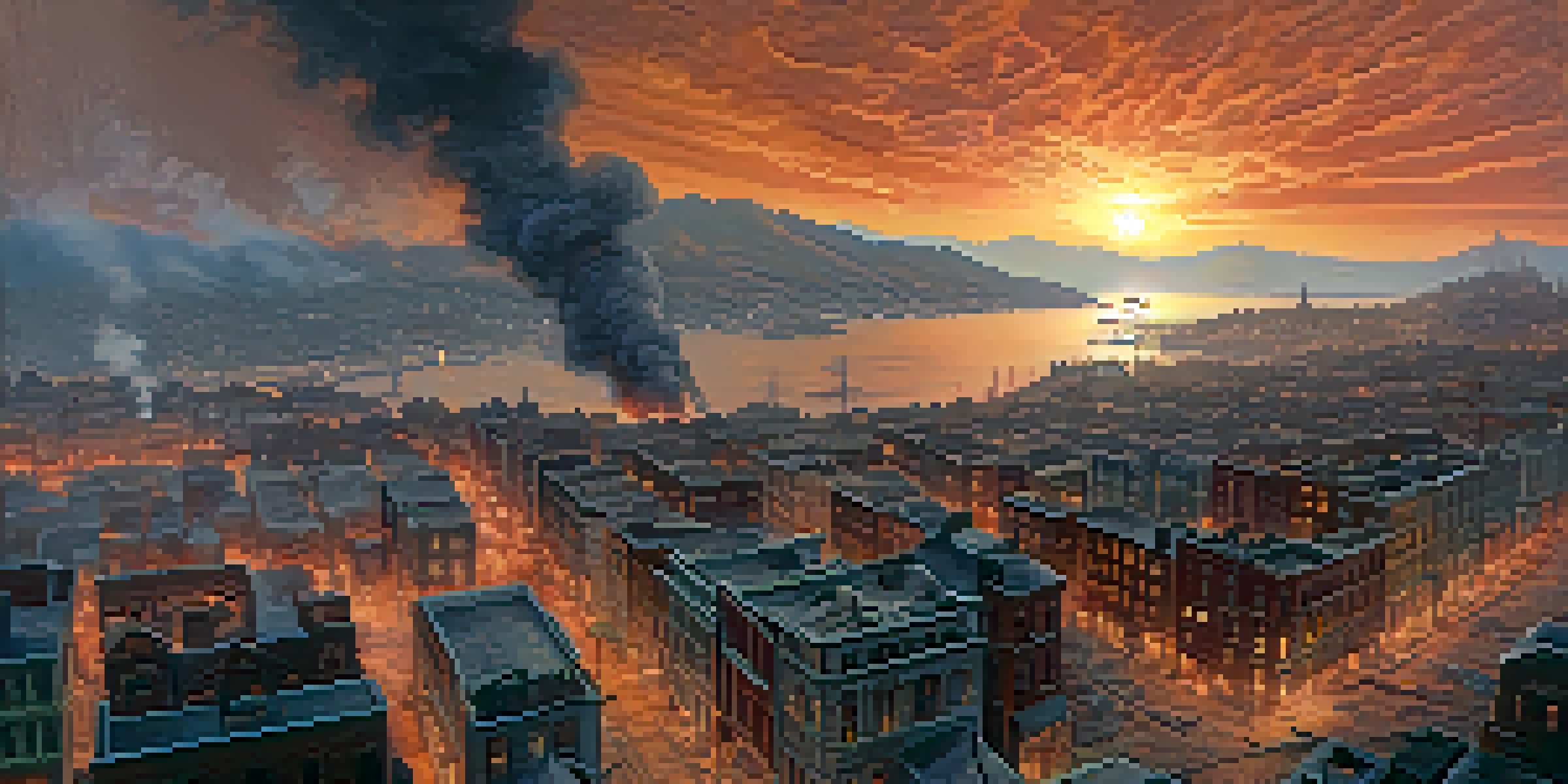Fires and Reconstruction: San Francisco After the 1906 Quake

The 1906 Earthquake: A Catastrophic Prelude to Destruction
On April 18, 1906, a massive earthquake struck San Francisco, registering a magnitude of 7.8. The quake not only shook the ground but also ignited fires that would devastate the city. Within hours, much of San Francisco was in flames, leaving thousands homeless and in despair. This unprecedented disaster marked the beginning of a long and arduous journey toward recovery and reconstruction.
Immediate Devastation: Fires Rage Through the City
Following the earthquake, fires erupted across the city, fueled by broken gas lines and wooden structures. For three days, flames consumed neighborhoods, reducing entire blocks to ashes. The destruction was so widespread that firefighters struggled to contain the inferno, as water sources were limited due to damaged infrastructure. This combination of earthquake and fire turned San Francisco into a chaotic and smoldering ruin almost overnight.
1906 Quake Devastated San Francisco
The 1906 earthquake and subsequent fires left thousands homeless and resulted in significant loss of life, marking a tragic chapter in the city's history.
The Human Toll: Loss and Displacement in San Francisco
The aftermath of the disaster left approximately 3000 people dead, while over 200,000 residents were left homeless. Makeshift camps sprang up in parks and open spaces, as displaced families sought refuge. Many residents faced not only the loss of their homes but also the loss of loved ones and their livelihoods. This human tragedy served as a poignant reminder of the fragility of life in the face of nature's wrath.
Government Response: Mobilizing for Recovery
In the wake of the disaster, local and federal governments mobilized to provide assistance to those affected. Relief efforts included food, shelter, and medical care for the thousands who were suffering. The American Red Cross, led by Clara Barton, played a crucial role in coordinating these efforts, helping to distribute supplies and aid. This swift response highlighted the importance of community and resilience in times of crisis.
Community Resilience Post-Disaster
In the aftermath, the spirit of San Francisco's residents shone through as they came together to support each other and rebuild their community.
Rebuilding the City: Planning for the Future
As the immediate needs of the population were addressed, attention turned to rebuilding the city. City planners and architects took this opportunity to design a safer, more modern San Francisco. This included wider streets, improved fire codes, and the construction of earthquake-resistant buildings. The vision for a rebuilt city was ambitious, aiming to not only restore what was lost but also enhance the urban landscape.
Innovation and Infrastructure: Lessons Learned
The devastation of 1906 spurred significant advancements in building codes and urban planning. Innovations such as reinforced concrete and steel-frame construction emerged to improve safety against future quakes. Additionally, the city invested in better emergency response systems and communication networks. These lessons learned from the disaster laid the groundwork for more resilient infrastructure in the years to come.
Lessons Lead to Safer Infrastructure
The disaster prompted significant improvements in building codes and urban planning, ensuring a more resilient San Francisco for the future.
Cultural Resilience: The Spirit of San Francisco
Despite the catastrophic events, the spirit of San Francisco’s residents shone brightly in the aftermath. Community gatherings and efforts to support one another demonstrated remarkable resilience. Local artists, musicians, and writers captured the stories of survival and hope, reminding everyone of the city’s enduring character. This cultural resurgence played a pivotal role in healing and uniting the community post-disaster.
Legacy of the 1906 Quake: A City Transformed
The events of 1906 left an indelible mark on San Francisco, shaping its identity for generations. The city not only rebuilt itself but emerged stronger and more prepared for the future. Today, the legacy of the earthquake and fires serves as a powerful reminder of the importance of resilience and community. San Francisco stands as a testament to the human spirit's ability to rise from the ashes and create a vibrant, thriving city.